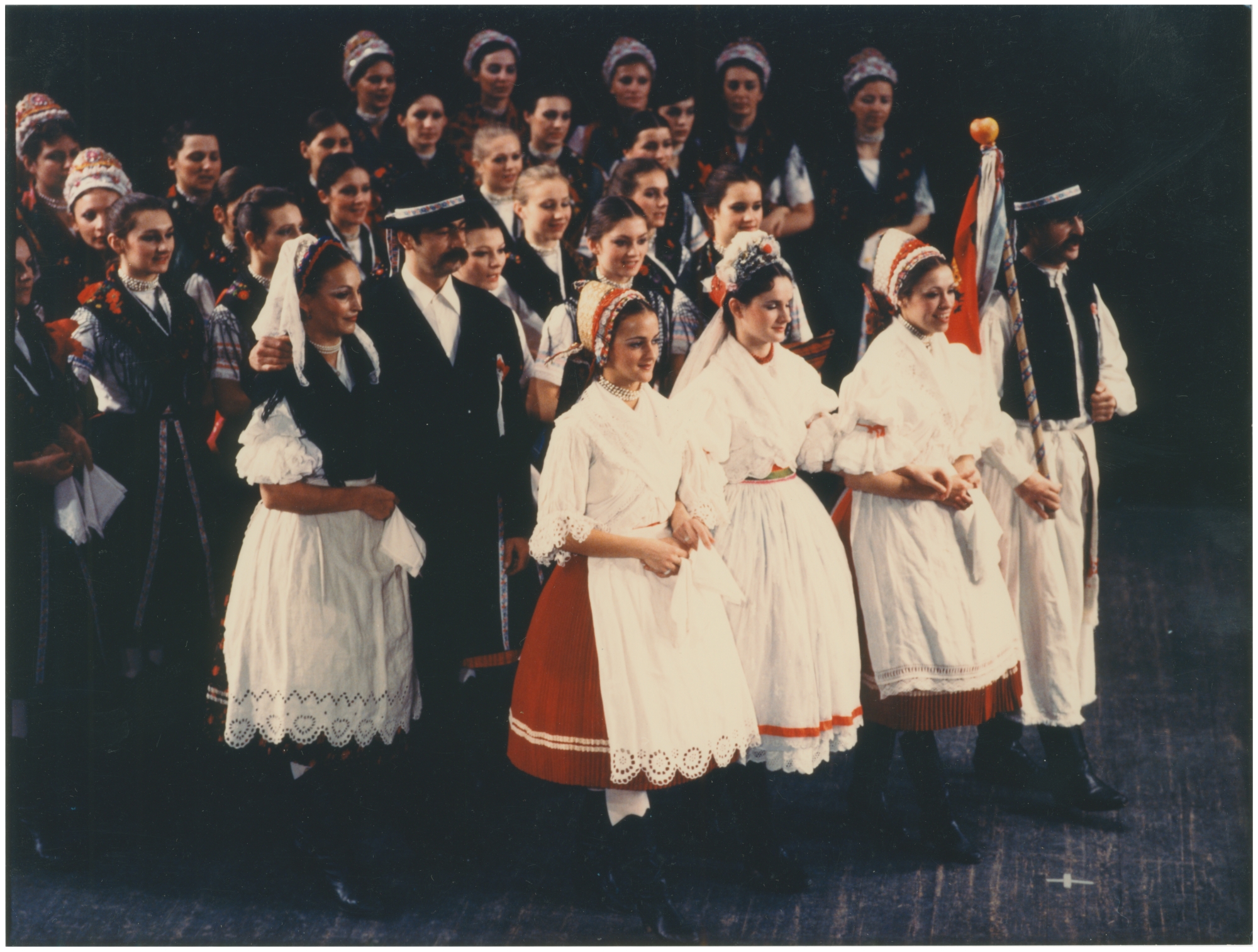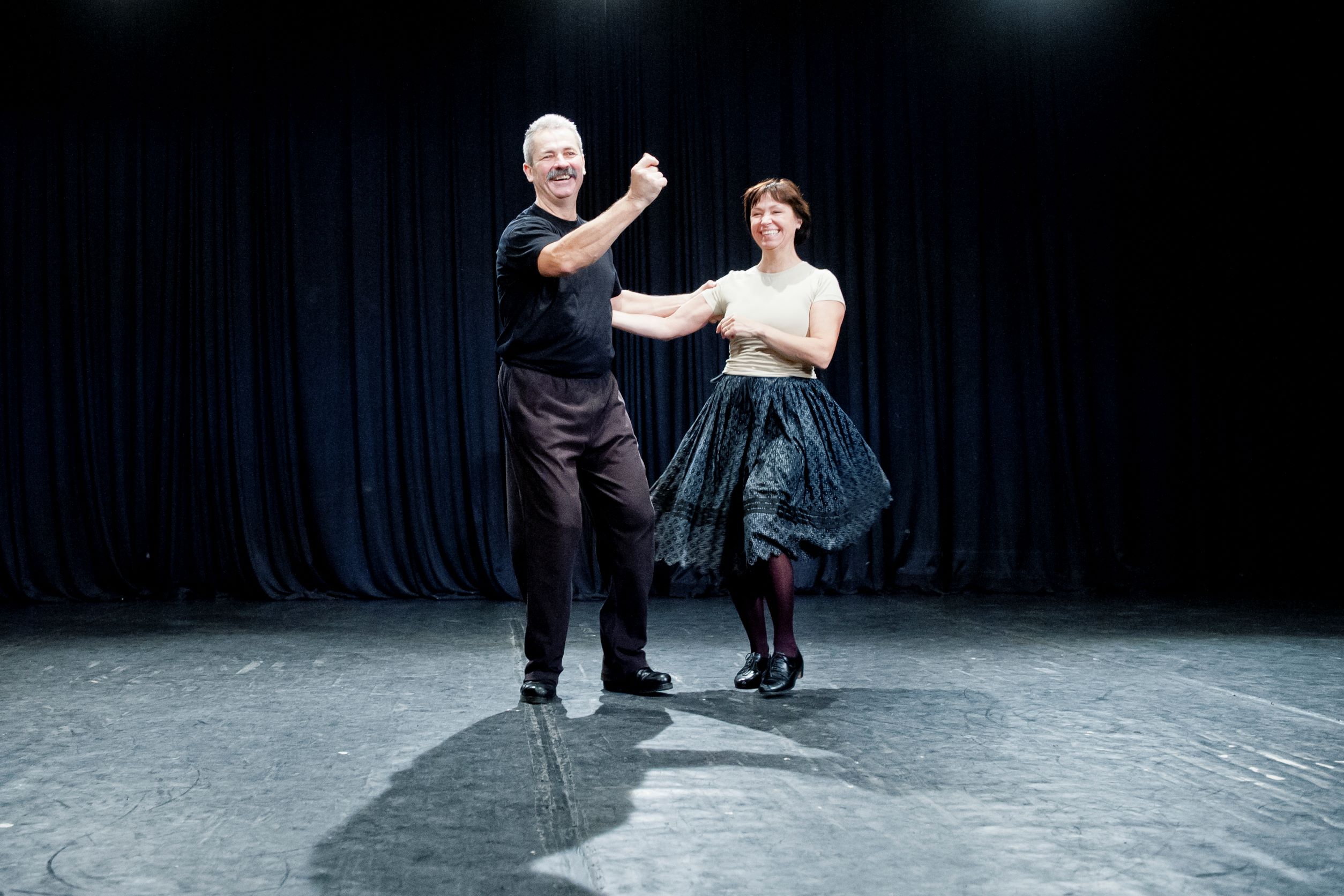Miklós Végső was an associate professor during four eras of the Hungarian State Folk Ensemble, and Gyöngyvér Hortobágyi was a professor during the Sándor Timár era.
(V.M.) "The four eras cannot be described in isolation, as each generation passed on its experiences to the next as a baton. Perhaps after the Rábai era, in the mid-seventies, it was necessary to continue on a longer, uncertain 'suspension bridge'. After the death of the founder Miklós Rábai, Dezső Létai was appointed artistic director, and he performed his duties with honour.
(H.Gy.) "The artistic director was aware that the vitality of the young people was skyrocketing, but he had been socialized under a different regime, and as a leader he could not address them. He has not yet dared to give them their own show, so that they can continue the intensive work they are used to at the Ballet Institute at their own pace. This anomaly persists to this day, as for five years at the Folk Dance Department, young people are subjected to hard physical work, and when they join an ensemble, their usual workload may not continue.

(V.M.) "Let's move to the Timár era! We were very happy with Mesti's appointment, meaning that we could get back on track where we started.
(H.Gy.) "It was easier for me because I joined the Ensemble in 1979, so I only had to wait two years for Mesti to arrive. After my experience at school, at the age of 18 or 19, I felt a bit compelled to do those shows, but thinking about it now, it was very useful to be on stage. Indeed, the productions focused more on stage performance than on authentic dance, so we had to practice humility in the art, also because of the unity of the dance company. Mesti also applied the method he used in school - to learn folk dances in the native language and to improvise - in the Ensemble. The focus of his choreography was the authentic staging of authentic dances. He thought in space, which dazzled the audience and highlighted the virtuosity of the dancers.

(V.M.) "The new change has also been influenced by the heritage keepers. Before the 1994 American tour, Mesti's departure was already an open secret. Subsequently, Ferenc Sebő was appointed to lead the Ensemble, but this decision did not seem to be a final solution. At that time we worked with guest directors-choreographers, and at the Ensemble, we lacked a unified concept. This era ended with the appointment of Gábor Mihályi."
(H.Gy.-V.M.) "We have a rich life experience to share with our students. The students are most interested in authentic dances, as the ars poetica of the folk dance department also counts traditional dance as a source. If you know the language, you can do everything. On this solid basis we train professional dancers, but of course our students also get other impressions: they learn ballet, while modern dances strengthen their body awareness. We try to cater for all ensembles, taking into account the repertoire and needs of professional ensembles: the curriculum is constantly changing. We regularly consult the leaders of these ensembles and invite them to the exams from the third to fourth grade. The most important thing we can pass on to our students - something we were raised with, something we learned at the Hungarian State Folk Ensemble - is humility for life and dance. For only he who understands and confesses this can become an authentic artist."
Zoltán Csermák
Photos:
1. Front page photo: Timár's wedding (photo by Béla Kanyó, HSFE archive)
2. Four men's dances in memory of Miklós Rábai (photo by Béla Kanyó, HSFE archive)
3. Gyöngyvér Hortobágyi and Miklós Végső on stage (photo: Róbert Bácsi)
